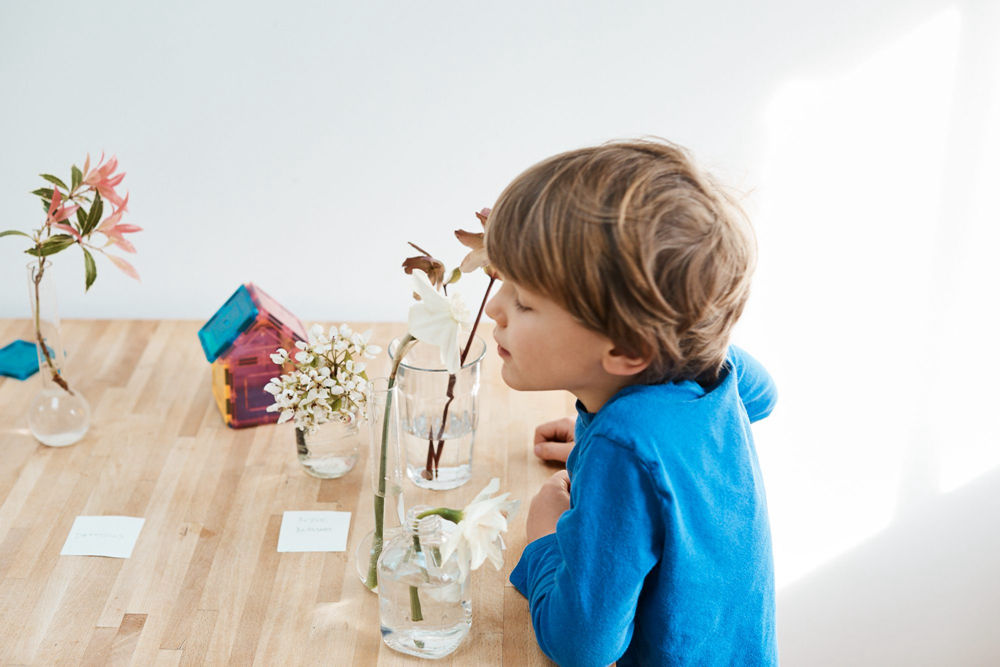🔥 Spring Festival holiday sales promotion up to 10% Discount

The fastest way to make your home feel more alive is to bring a bit of nature in. A bright bouquet is welcome any day (give us all the flowers, please!), but there are more creative ways to embrace the natural world with your child, including easy craft projects and mini science lessons. Connecting with nature at home can be a way to engage your little ones in a new activity that will pass the time and sneak in a little learning too. Here are five activities to try that you likely have the supplies for at home.
Go on a walk in your backyard or through your neighborhood to gather plants to make your paintbrushes. Look for bushes, shrubs, and trees with small-ish, sturdy leaves and clip pieces from a variety of plants. You’ll also need to gather a few short sticks to use as the brush handles. Once back inside, a parent should secure the plants to the sticks with rubber bands to make the “brushes.”
To paint with your nature paintbrushes, provide your child with a variety of paint colors. You can squeeze dabs of acrylic onto a piece of cardboard or if you have a more liquid style of paint, pour it into small cups. You’ll also need a dish of water and some thick paper to paint on. Invite your child to dip the brushes into a small amount of paint and brush them onto the paper. Together you can observe how different leaves make different marks on the page.
You don’t have to be planning a vegetable garden to start seeds at home. Growing seeds just for the sake of seeing the little sprouts emerge is a fun activity for kids that teaches them about a plant’s life cycle. To make the project engaging, have your child make a prediction on how long it will take for the seeds to grow. Then invite your child to measure the plant growth periodically and record the results. Almost anything can serve as a vessel for your seedlings, including egg cartons, cleaned-out yogurt cups, and toilet paper tubes. Here are a few tips to ensure success with your seed experiment:
· Get some seed starting soil mix for the best chance of successful sprout.
· Pick seeds that grow quickly, such as lima beans and marigold.
· Place the seeds in the sunniest spot in your house.
· Keep your seeds well watered; While a plant can tolerate a dry day, a sprouting seed cannot.
To set up this activity, scour your home for seeds. Scrape seeds from inside a bell pepper, melon, or winter squash; pull beans, quinoa, and whole-seed spices from your pantry; snag a handful from your bird feeder, and if you’re planting a garden, grab a few of your future flowers and plants. Dump all the seeds onto a tray or baking sheet and provide your child with containers for sorting (an egg carton works great). Your child can sort by seed color, size, shape, or by a category of her choosing. As your child sorts, talk about the kinds of plants each seed will grow and what food or flowers they came from.
You don’t need a special device to press flowers at home: a thick book, a heavy object, scissors, and some plain paper will do the trick. First, collect flowers with your child. Look for relatively flat blossoms, like pansies and violets (lush, many-petaled flowers like roses and marigolds are hard to press). Open your book to a place near the middle and place plain white papers on either side of the book to protect the pages. Trim the stem (and stamens) off of each flower to get it as flat as possible and place onto the paper. Very carefully close the book and place your heavy object on top (we used two bricks). Let the flowers sit for a week before removing them from the book’s pages. You can use the dried, pressed flowers for art projects or to make a card to send to Grandma, but be careful as you craft with them: They’re very delicate!
Gather a mixed bouquet from your backyard or on a walk through your neighborhood (ask before picking flowers from a neighbor’s yard, of course!). You want to search for all different kinds of blooms and if possible, varieties within a type, like two different daffodils or two different roses. When you get home, put each flower in its own bud vase, juice glass, or upcycled jar. Then, working together with your child, identify each flower’s name; if you don’t know, you can look it up online. Big kids can write down the identifications themselves, but pre-readers might focus more on the first letter (“D” is for daffodils) and learning the new words. Next, invite your child to smell each flower and ask them what he noticed about the smells and which he likes best and why. You may be surprised to find some have almost no scent or that two varieties of the same type of flower smell quite different.